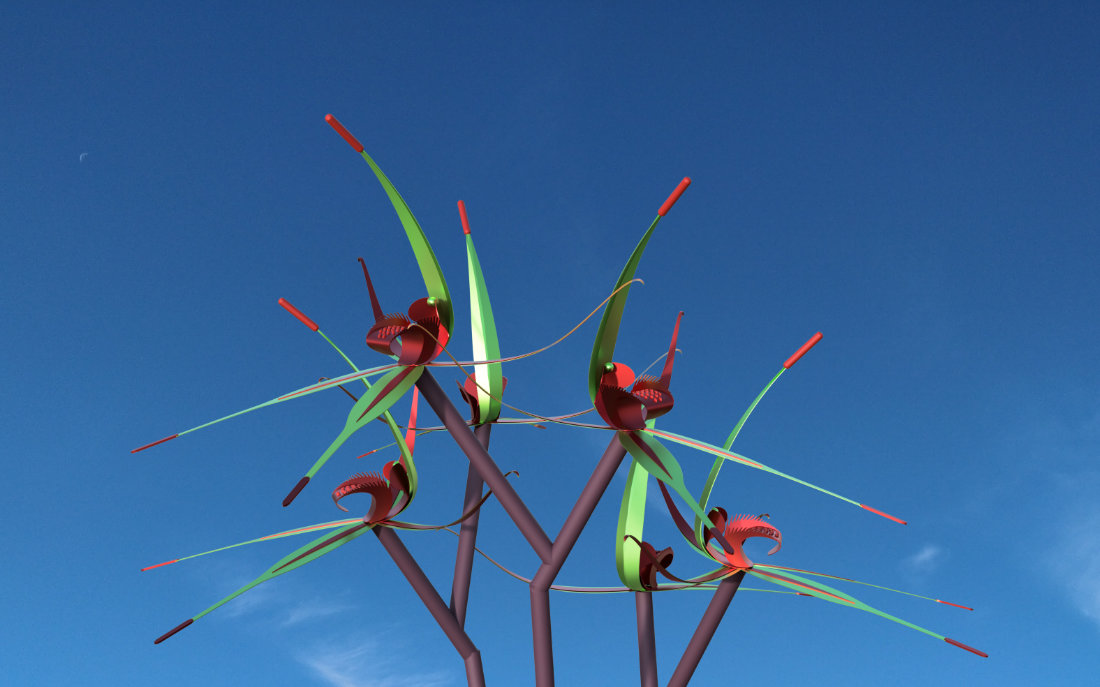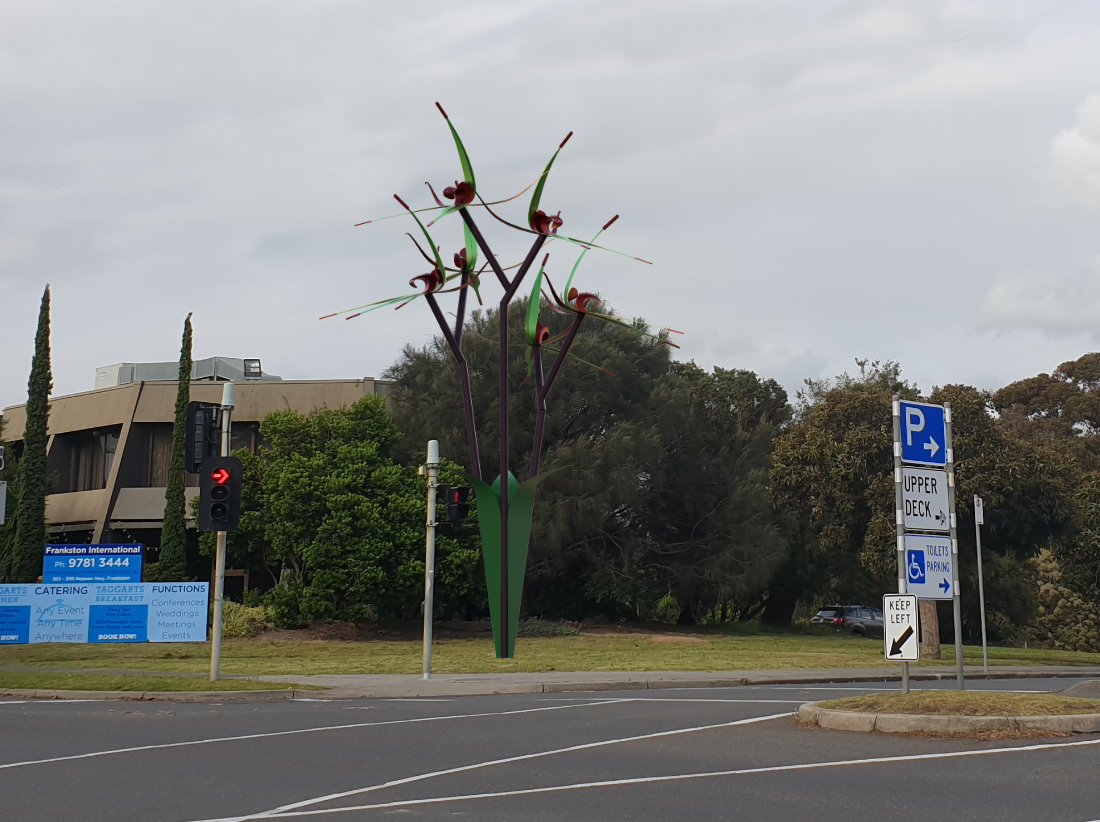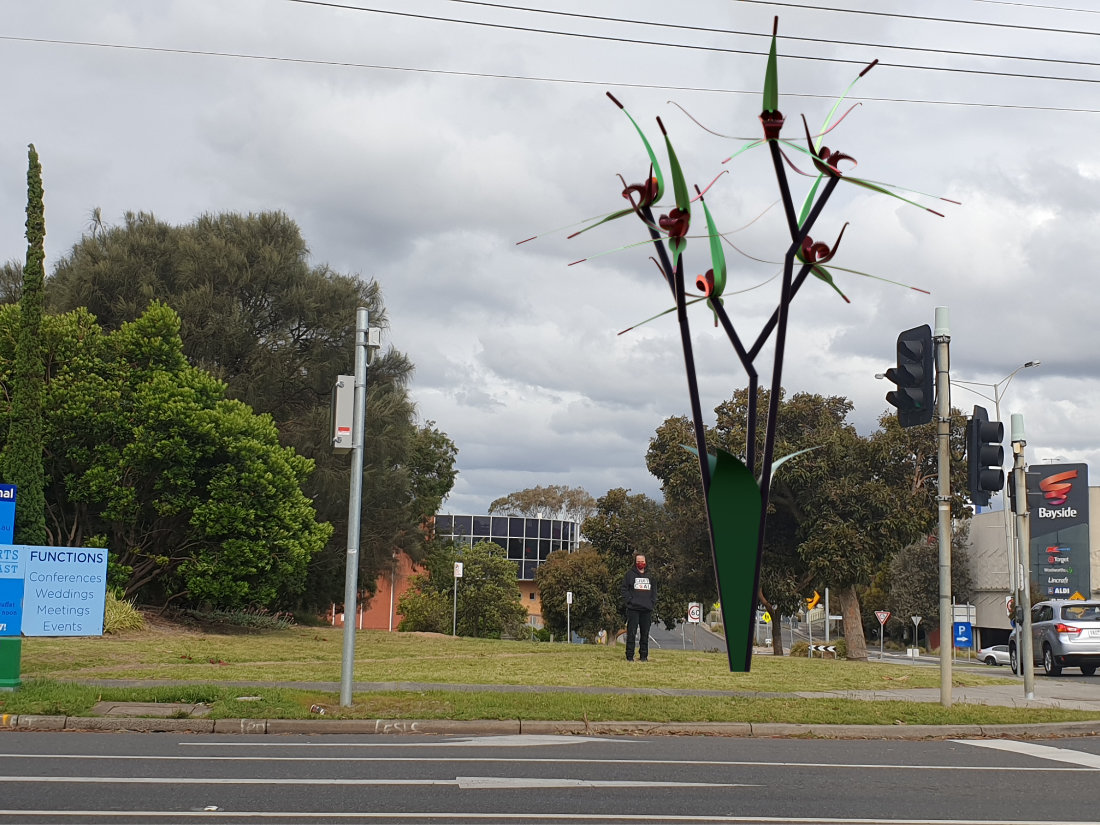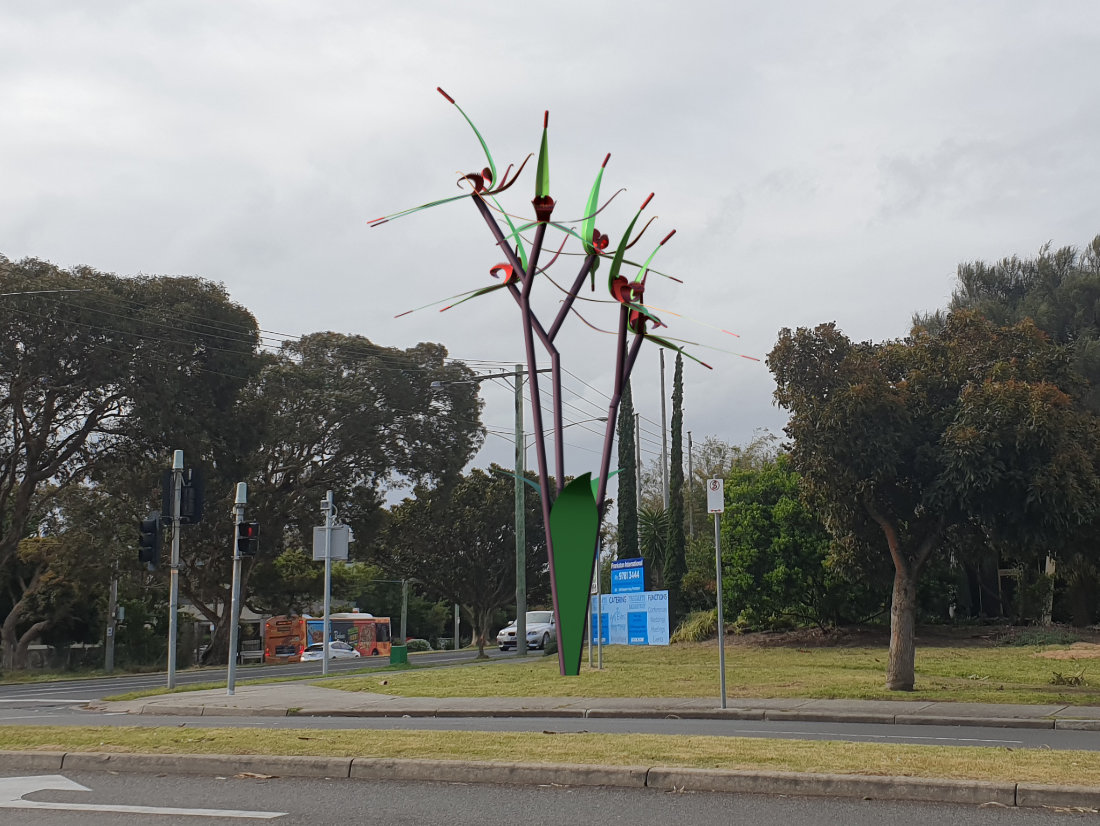









The Frankston Spider Orchid Caladenia robinsonii is endemic to the region, and was first formally classified after samples were collected from north Frankston. It is listed as critically endangered and is one of the most threatened orchids in Australia, with one small population of less than 100 plants remaining in nearby Rosebud. There is a government Recovery Plan for the orchid, and a local group dedicated to saving this species.
There was once a variety of orchids across the Frankston sandy heath woodlands country that formed their own distinct colonies and family clumps throughout the landscape. These orchid colonies were traditionally harvested as a food resource for the Boon wurrung community.
Materials
The sculpture will be fabricated in steel and aluminium. Colour coatings will be applied by D&M auto and have a life expectancy of 25 years.
Concrete will be used for the underground footings and also within the structure. This will not be visible.
Dimensions
Height =11.7m
Diameter at the top = 8.3m
Diameter at 3 height = diameter 1.3m
Diameter at ground level = 0.25m
The physical space the sculpture occupies in the park area itself is very minimal, which leaves more available space for people and plants. The sculpture is small at the base and tapers up, with most of the bulk of the sculpture in the sky.
The tall nature of the work increases the visual impact of the installation. The total height has been kept below the height of the lighting poles in the middle of Nepean highway which are approximately 12.2m high. This is to ensure the height for access is within the heights Council is already working within.
Public safety
Climbing is the biggest public risk for a work like this, and safety is a key element of this design. The leaves have been designed to create a 3m high fence that has no footholds, making climbing impossible without assistance or implements. The central void will be filled with cement, so it is not possible to fall inside. The space up at 3m high where the leaves join together will be designed so that it is not possible to wedge a human head or neck if someone does attempt to climb the structure.
